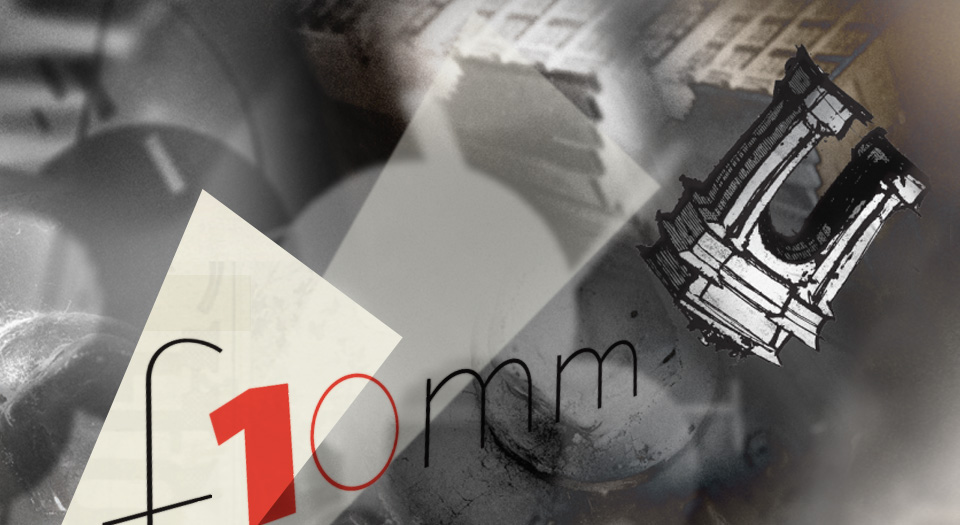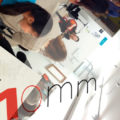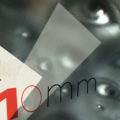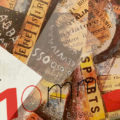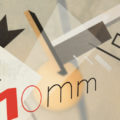
A PERSONAL HISTÓRY oF FLOMM so far PART 6 of 10
“I’m convinced that everything you experience or learn in life will eventually come into play if you become a Graphic Designer. It’s why I ask my students wat they’re already into at the beginning of every course I teach. A trend I was into back in the 1980s made a major comeback in the FLOMM game. Digging thru boxes to find the old books, newspapers and clippings – especially before the bank took my house – was a treasure hunt.”
—Me, quoting myself again
Designing the Villains for FLOMM! THE BATTLE For MODERN 1923 was difficult. But fun. Because Tradition is steeped in, well, Tradition.
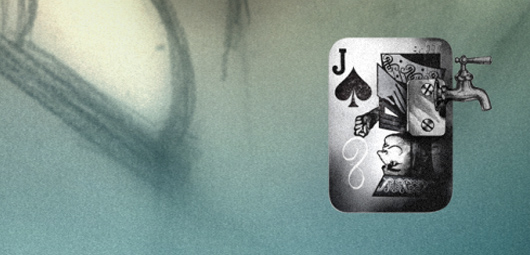
Lots of rules to play with and make fun of and break.
So even MOR book learnin (and another section to add to the Bibliography): Background on the Game of Chess, Playing Cards, Military, Crime, Police and Justice, Horology, Decorative Arts and Architecture, Capitalist Empires, Daggers as Footnotes.
Like, fucking EVERYthing.
going bonehead
And so the FLOMM Villains ended up representing several Traditional things – and for their design, they became a bunch of DADAist collage pieces made from a mix of illustration and pieces of vintage ‘bonehead’ Clip Art.
In the 1980s there was a trend called ‘bonehead design,’ a Retro Clip Art (née ‘Printer Cuts’) Thing tied to Minneapolis-based Graphic Designer Charles S. Anderson, covered in detail in Meggs’ Chapter 22.
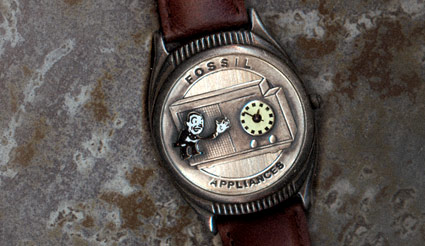
From Ralph Lauren CHAPS to Turner Classic Movies to the first batch of FOSSIL watches (they copied him, then he called them and said, ‘hey let’s work together here’ and he ended up designing a line of ‘appliances’ watches for them) (above), Anderson’s update of wat became labelled historically as The Funny Little Man appeared on products and publications everywhere.

I used to read all about CSA’s work in multiple Graphic Design magazines and I was honoured to have some of his work in the 2006 design show I mentioned in our first post.
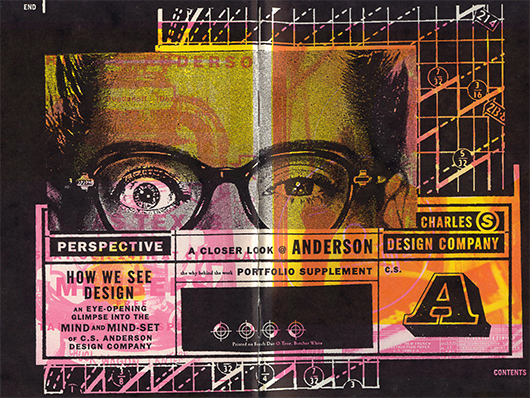
And this was long before Hipsters seized on the whole thing.
Anderson brought back Mason Jars for Classico Tomato Sauce in 1985, today they’re back again – as referenced on RADíO FLoMM in 2018, of course.
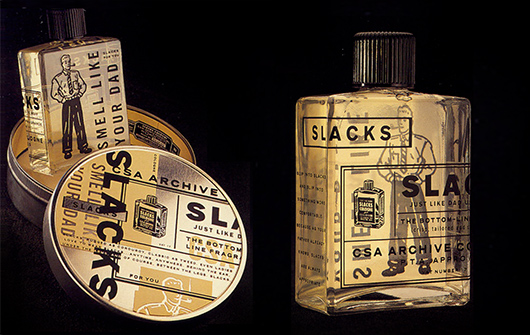
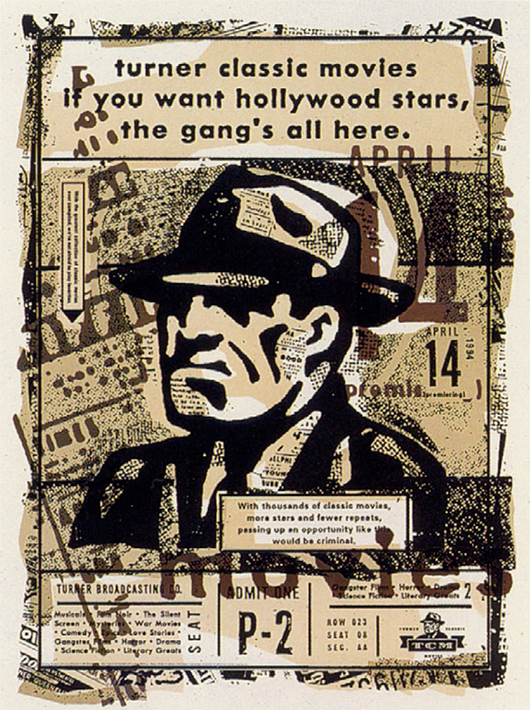
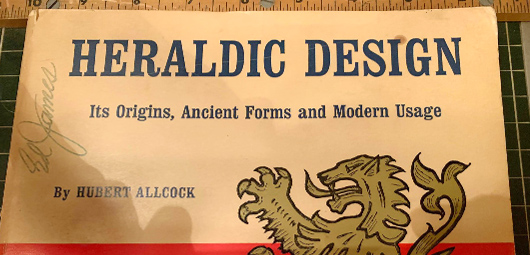
digging and making
A major tradition I could not ignore is Heraldry. And turns out, someone wrote a book:
Heraldic Design: Its Origins, Ancient Forms and Modern Usage (1962) shows how to make your own Personal or Commercial Coat of Arms, which was very popular amongst car manufacturers at one point – such as Ford, Buick, Porsche or Cadillac (below).
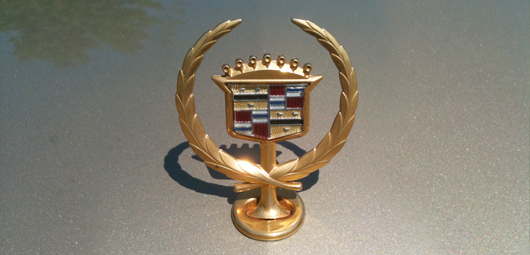
I developed our Villains’ Coat as best I could and had a Genuine British Person actually approve it.
Suzanne Leibrick stepped in as one of the first FLOMMISTS and gave me her okay.
She later became the editor of all the weird copy I wrote for our experimental website and today is one of the leading VR developers in Silicon Valley.
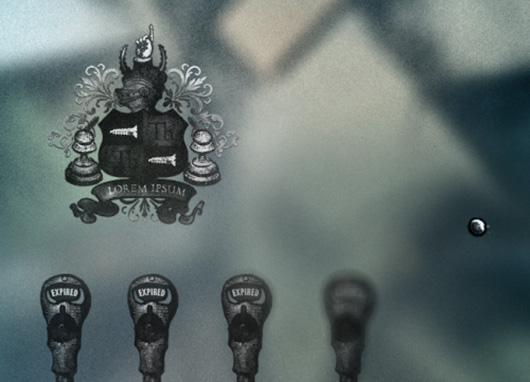
Who doesn’t want to blow up Parking Meters?*
*Invented after 1923. Oops. This faux pas led to me creating this.

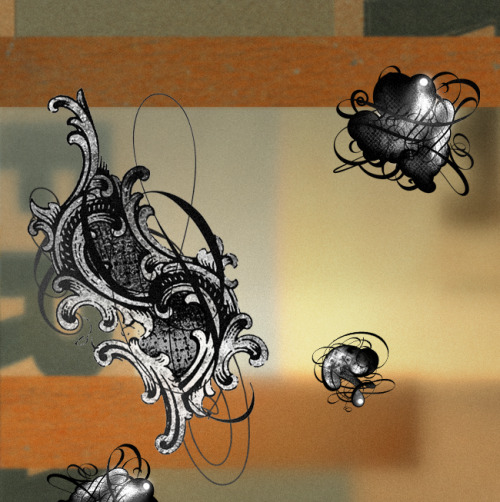
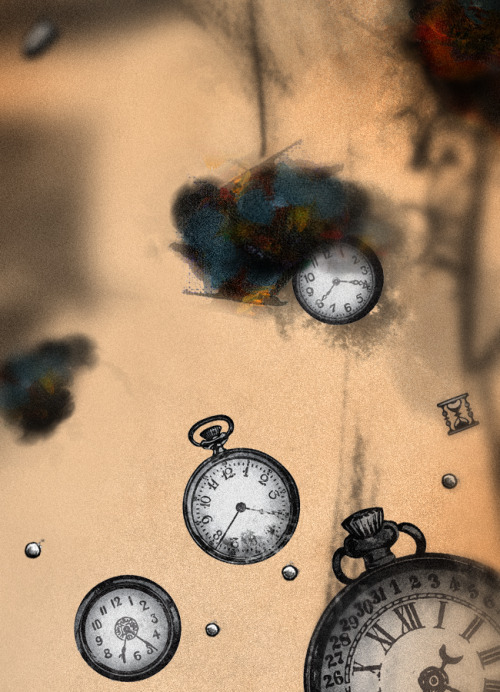
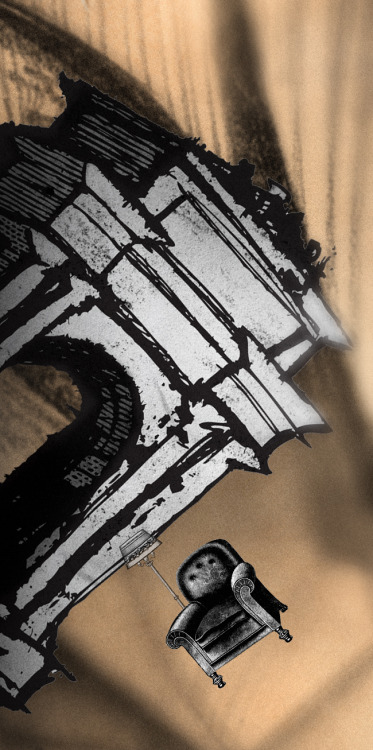
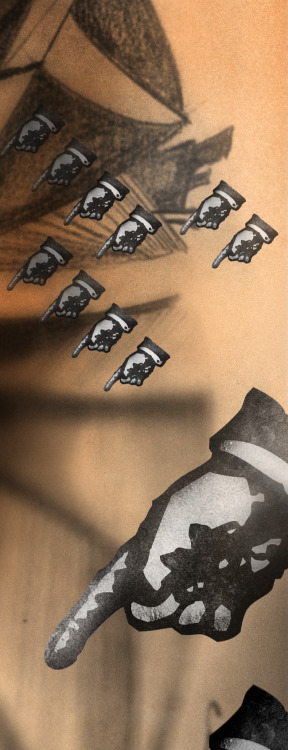
All this became part of a world where
ANGRY MODERN ARTISTS fight against a RESOLUTE OLIGARCH –
a despotic Boss called The ThWINGh, with funny hair – who SCREAMS at all around him, and wishes to CONTROL everything everyone says and does – stopping anything NÜ, abolishing change, using his minions to enforce Absolute Tradition –
The Way Things Ought to Be …
The ThWHINGh reigns over a conventional world controlled by THE SUPER RICH – and everyone else must fall into place in their social class, give up their own dreams, work the factories and industries supporting the whims and desires of The ThWINGH and The Powerful Ones – while They (in the game they are called ‘They’) have all the wealth and all the power.
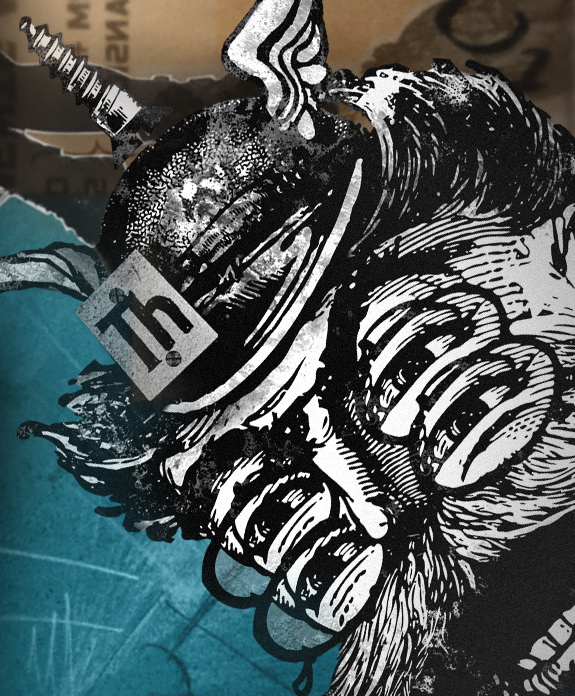
In my own foray into Corporate America, I’d discovered that some of THE SUPER RICH had two viewpoints regarding their workers: If you’re not Super Rich, you deserve wat you get for being too dumb to actually become Super Rich; and You should be proud to toil away to support your powerful rulers.
Like, They wouldn’t shut up about it. Really.
Upon reading mor, I found all this went back to The Age of Empire and it wasn’t until 1924 (right after ’23, of course) that a series of studies were done that showed workers actually aren’t motivated by making their bosses rich.
Who knew?
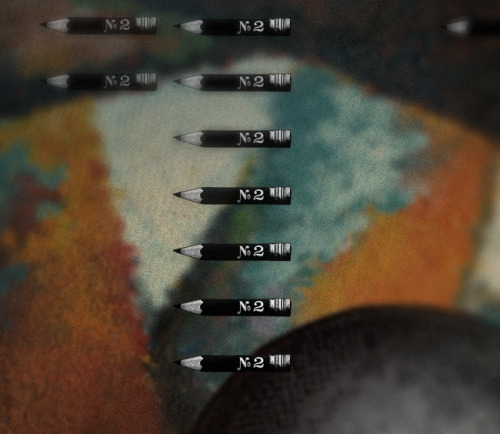
Over 30 different Villains included:
The No 2, a ‘Pencil, no Eraser,’ and Mars, the ‘Angry Planet’ (above),
The Classicals ‘Shadows of Antiquity’ (old architecture),
TARS, ‘Cigarettic Airships,’
the rotting extravagant Rococcos (decorative forms that get in the way),
The hEAR, a ‘Surveillance-Obsessed Drone,’
The ‘Seats of Power,’ Pawns, Timekeepers, Daggers,
a ‘Royal Figurehead,’ and Jacque “One-Eyed Player,’
Grande General Huffe on a recruiting poster and E. Severenus, ‘Managerial Sycophant’ (below and below)
among others.
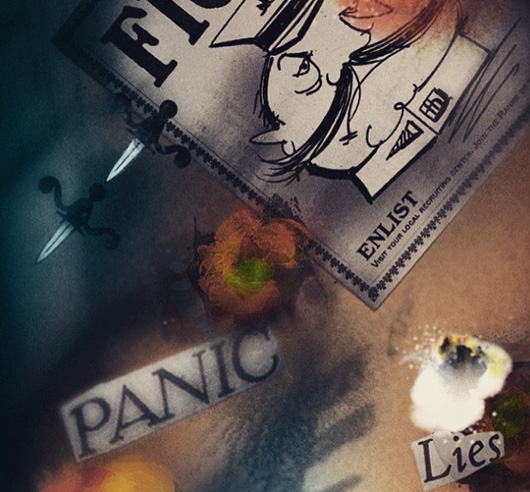
How close all this would hit home – making FLOMM mor relevant, especially by the end of 2016 – wasn’t something I had predicted.
We were on a path that damn near mimics history, it wasn’t as obvious yet to me that the need for ANGRY MODERN ARTISTS would come back into vogue.
I was simply concentrating on making a video game incorporating history: The original ages of Monarchy and Empire, plus the post-World War I world and the rise of Modern Art – especially in Berlin – who knew our real world was about to fall into its own BATTLE for pretty much the same goddamn things?
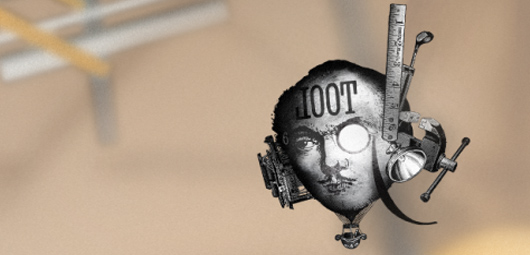
modern heroes
The FLOMM heroes were straightforward – old school frame animation (sometime in college, I was redubbing 1920s Felix the Cat cartoons with Led Zeppelin tracks – for fun – so I knew how the old animation looked) with subtle nods to art history movements and players:
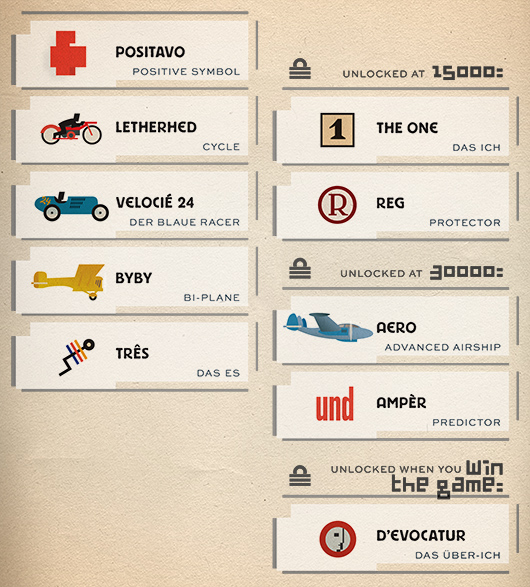
Power ups were mostly food-based, with Garlic being the most lethal:
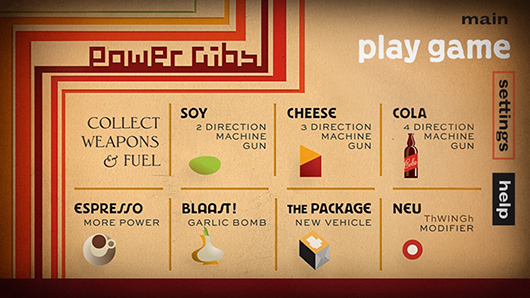
Once a player won the game – fighting their way thru multiple levels with the ThWINGh at the end – they’d be able to ‘unlock’ D’Evocatur.
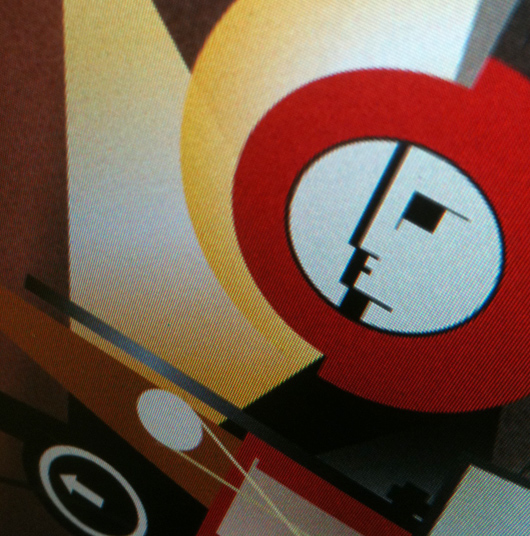
Which is totally a Bauhaus swipe – the same way Peter Murphy’s band swiped Oskar Schlemmer’s icon for the school.
I originally named D’Evocatur ‘The New Man’ based on Malevich’s Futurist Opera, Victory Over the Sun (1913).
Or Newman from Seinfeld, not sure.

other content
Most of the art for FLOMM started as sketches and handmade artwork, just like the source materials I was referencing.
The sprites for the explosions were painted on canvas.
And I had not figured out how to export sprites from Photoshop just yet, so it would be almost a year before I saw how my painted sprites would animate.
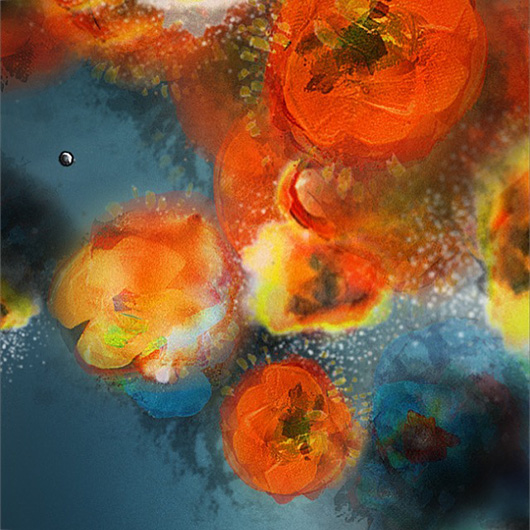
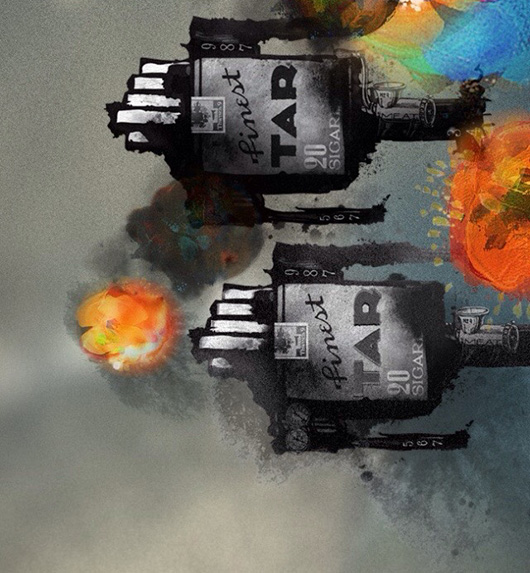


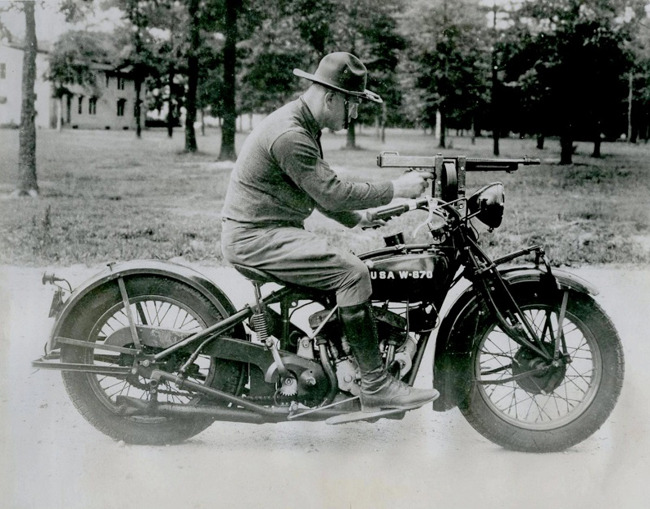
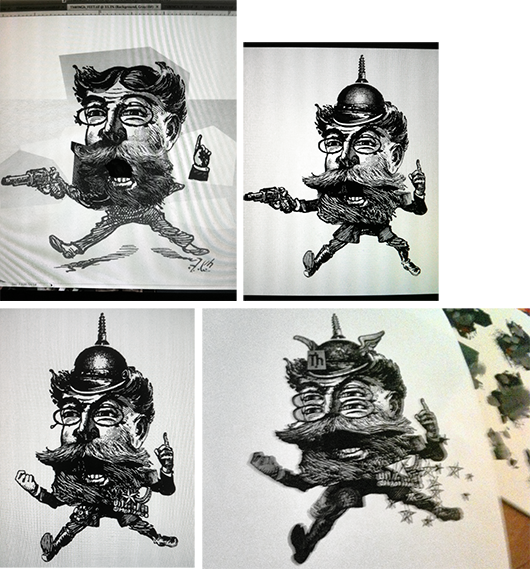
And while building all the parts and reading EVEN MOR books on Modern Art history, I kept making backgrounds, which I started numbering, calling them FLommist Compositions, like Vassily Kandinsky pioneered.
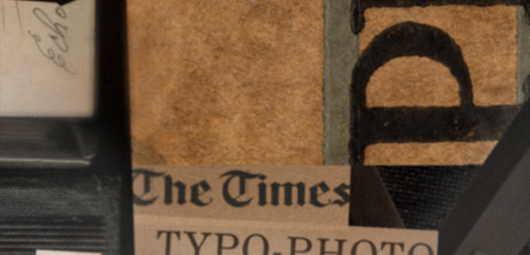
Using the autobiographical approach of Synthetic Cubism, collage materials would be from my dad’s own history, photos from high school, WWII, his time in the Bay Area, his businesses and his hometown of Hazleton, Pennsylvania.
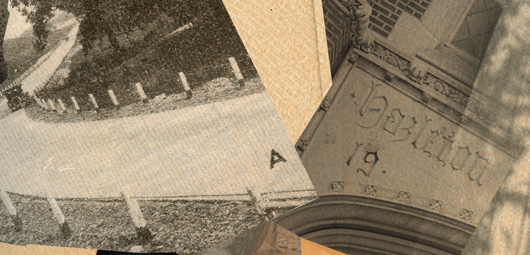
I even threw in a reference to the awesome snack PITZA one could only get there.
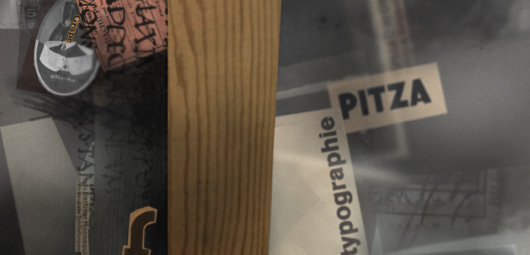
And at one point I found film negatives for photographs of New York Harbor he took during the war.
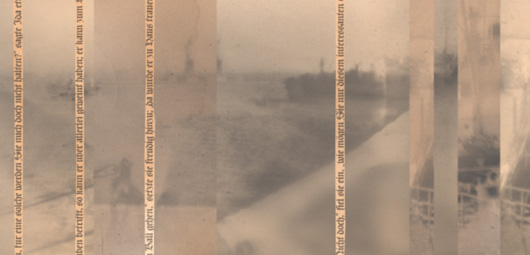
“A great many people come to me hoping they can change themselves … they want to know how to handle life better. When an artist comes to me, he wants to know how to change the world.”
—Frank Gehry’s Therapist, from Sketches of Frank Gehry (2006)
manifesto’d
Then Bwargh von Modnar show’d up and we talked art movements.
So I added her name in a collage.
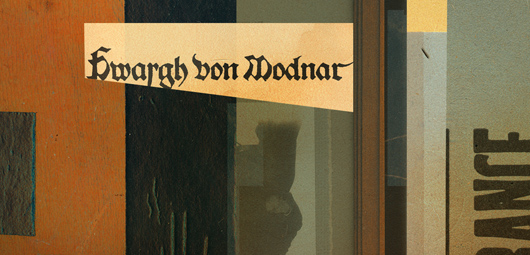
And then I started writing THE FIRST FLOMMUS MANIFESTO – cause every art movement needs a Manifesto.
Even a fake one.
And then Bwargh had a Manifesto she wrote on her own while taking my history class years before. Her version was awesome, and it reminded me wat a Manifesto really should be.
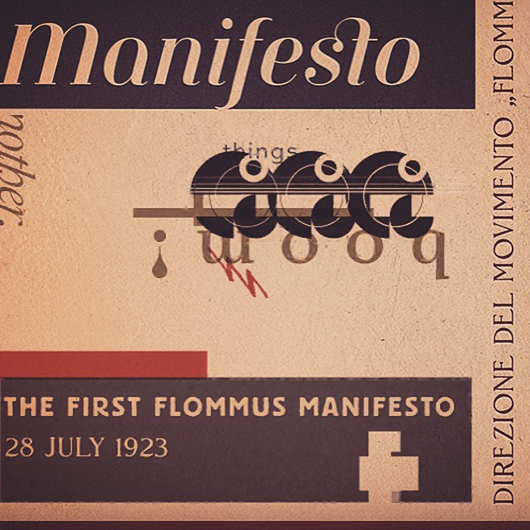
I opened the whole thing with a line from my wife:
“Some people are simply content to live in this world – the rest of us want to change it.”
—Jeanne Mehallo
I added a lot of my own beliefs amongst FLOMM game silliness.
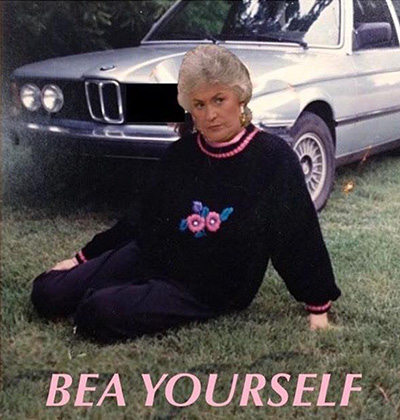
A visual form of the Manifesto would appear in the game amongst the info screens, and some of it foreshadowed wat was going to happen AFTER the game.
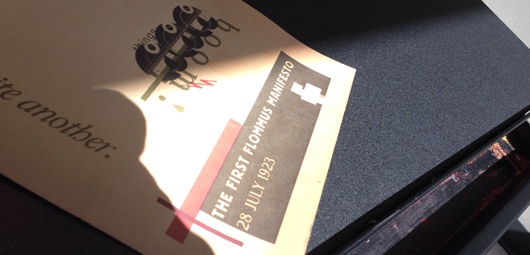
And in talking to Bwargh, I became very intrigued by collaboration.
Also, I found designing an entire video game by yourself is kind of insane.

“I now know why game developers work in project teams, with an emphasis on the word ‘teams.’ I naively took on all the design tasks myself. As a result, FLOMM ended up in development for over five years.”
—Me, some time in 2015
Back in 2012, my team was me, Chelsea Davis doing music and Moki programming.
“Hey, let’s do this again sometime. I’ll write a tune and you make everything else! Ha ha!”
—Chelsea, after the game release
With OVER 70 different randomly loading variations, I finished backgrounds sometime in 2013 – which included a Paint Like Cézanne assignment I made during my freshman year of High School.
While moving, I opened a box and there it bloody was.
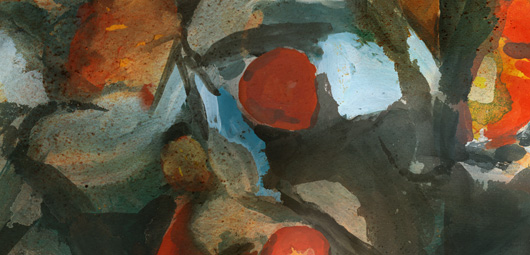
making noises
FLOMM! THE BATTLE For MODeRN 1923 ended up with hundreds of parts. User interface, characters, visual effects, sound clips, sprites, artwork, typography (I designed a font for the game itself, based on the Palakstil lettering of Lucian Bernhard), and sound effects.
I was encouraged by a bunch of people to make my own sounds, not just use stock.
A conversation with the amazing composer and sound artist Leon Milo convinced me to jump in with both feet. It also reminded me that as I got older, trying nü things should not be something I ignore – which set me up for the risks I take today as an artist and human.
Leon passed away in 2014, I remember saying ‘why not’ to him as one of many why nots I’d be saying in years to come.
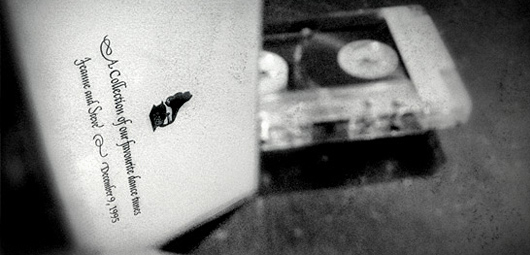
Sound Design was something I never pursued but had a love for. I’d experiment with recordings when I was in high school and 10 years later, pulled out a slew of analog equipment to create a Pink Floyd-like Big Band Mixtape as favours at my wedding.
The Mixtape took over two months to create. The Digital world today HAS to be a helluva lot easier, no?
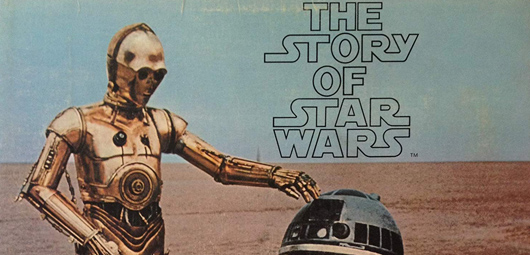
Farther back, I fell in love with the work of Ben Burtt when I first heard The Story of Star Wars LP (1977), which was one of the few media things related to Star Wars that was available to kids.
Later, NPR’s Star Wars Radio Drama (1981) created an entire universe only the movies hinted at at the time – before VHS players became fixtures in living rooms.
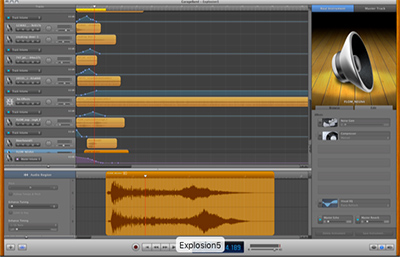
I started using GarageBand for FLOMM because I had a feeling Apple’s UI would be easy to learn.
And I’m still using it today, something about the woodgrain interface that I love.
And almost ALL of the game’s sound design came from analog sources – with nods to Flash Gordon (1936) and Old Time Radio.

the public preview
WIth Moki programming – us dealing with foreclosure and finally getting a diagnosis on my wife’s illness (pseudotumor cerebri), plus me teaching (at 4 different schools – I had begun a 3 year guest lecturer position replacing a professor on sabbatical at University of the Pacific and stuck my nose in again at UC Davis) – I found myself driving all over the Sacramento valley and the FLOMM project sort of lumbered on in the background.
In 2013, I was invited to give a talk at American River College about, well, anything.
I decided to give a History of the Bauhaus – to help promote my Graphic Design History course – and I threw in a quick preview of FLOMM! THE BATTLE For MODeRN 1923.

The big question that came up – which I’d gotten used to hearing over the next few years was:
“When do I get to play the game?”
And it was something I never could give a direct answer to.
About a month after my talk, Moki was called up for active duty and shipped off to Japan. And me teasing a FLOMM game started to blow up in my face.
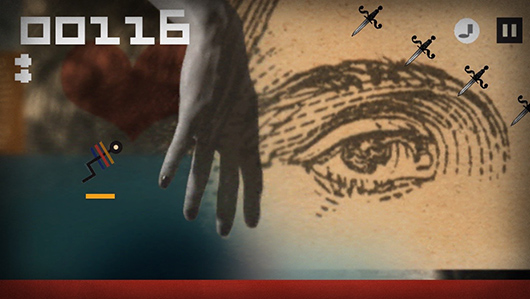
con
tinue
read
ing —
forward to PART 7 • • •
· · · back to PART 5
—steve mehallo
Flommist Steve Mehallo is a graphic designer, illustrator, font designer, educator, foodie and gadfly. He is the creator and founder of FLOMM!
PLEASE SUPPORT FLOMM
TIPS + DONATIONS DISCREETLY ACCEPTED






